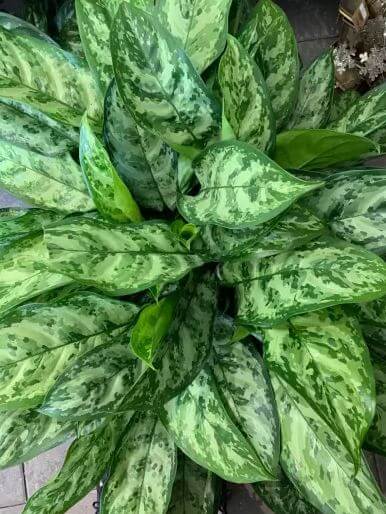Last Updated on February 13, 2023 by a Friendly Gardener
Invented in 1990 in Bangalore, India, by Kudoor Raghunath Bhandary using cross-pollination, the Aglaonema Indo Princess is the child of the Aglaonema commutatum “Malay Lady” and the Aglaonema hybrida “Abidjan”.
This aglaonema is an evergreen perennial that can grow to approximately 18 inches tall and 29 inches wide. Lance-shaped eaves can grow to 8 inches in length and 4 inches in width and arch outward. They are an attractive greyish green in hue, framed by darker green margins and with dark green spots that create chevrons. Green petioles occasionally feature pale yellow spots or streaks.
The Indo Princess aglaonema will produce blooms in the summer from their inflorescence that has a spadix with unisexual blossoms. These eventually pass allowing for the development of berries that when ripe turn red and contain a single large seed.
These plants are native to Asia and New Guinea.
Aglaonema Indo Princess Plant Care
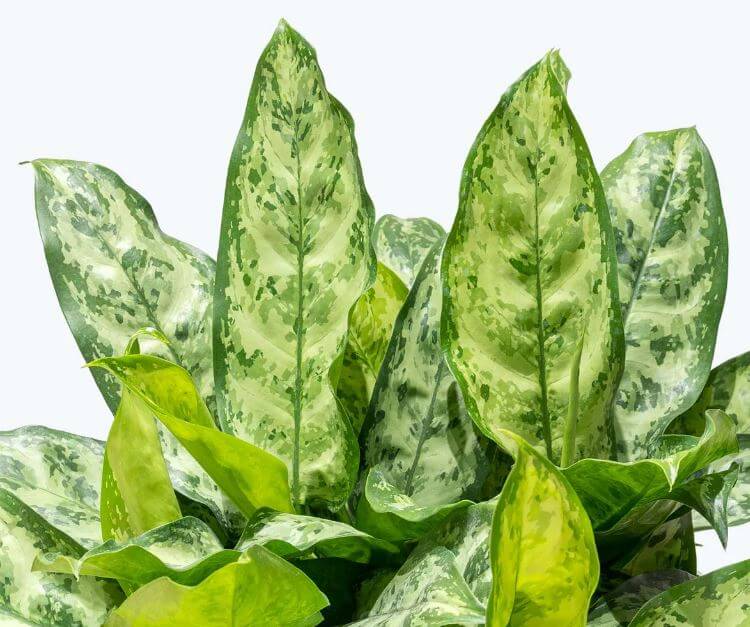
The aglaonema is an easy species to care for if a little attention is dedicated to providing adequate sunlight and proper watering.
Soil
For successful growth, prepare a substrate to guarantee aeration and moisture. A four-part mixture of one-part sand, one-part peat moss, and one-part organic material with the final part evenly divided between humus and crushed charcoal is the recommended formula. Excellent drainage is a must and the growing medium’s pH should measure between 6 and 6.5.
Light
Your Indo Princess needs bright light that is indirect. It is capable of adapting to low light conditions, but you will witness slower growth. This aglaonema can have direct sunlight exposure in the morning hours, but afternoon exposure risks scorching foliage. Partial shade is ideal
If your home or office does not have proper access to bright natural light, use a grow light set to low, but be aware that variegation will be less apparent. If the light is too bright, leaves may grow vertically.
Water
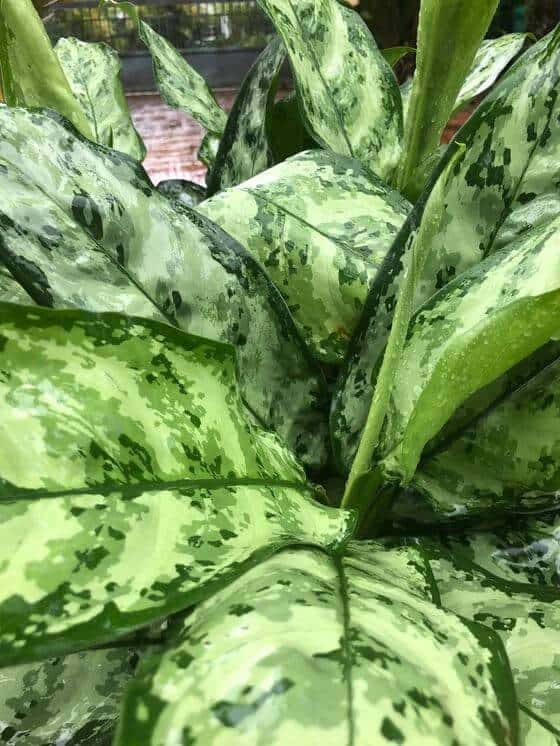
This princess will need to be watered when approximately half of the soil bed is dry. Do a good soaking and allow all excess water to drain out before returning your plant to its chosen location. Do not allow the plant or its container to sit in water. This is a plant that will suffer if underwatered or overwatered.
Humidity
Happily, the Aglaonema Indo Princess does well in low-humidity environments, but it will thrive in a spot with higher humidity. You can opt to include it in the bathroom or kitchen décor. If you want to improve indoor humidity levels, try a space humidifier or a pebble tray. Grouping plants together can aid in creating a microclimate and regular misting will help.
Temperature
The Aglaonema likes a temperature in the 65° to 75°F range. It should not be exposed to temps that dip below 60°F, so beware of this in the winter. Cold can cause damage to leaf tissue. These plants also do not like drafts, so vents or drafty windows should be avoided, and they do not fare well with a sudden change in the room temperature.
Feeding
Your Indo Princess will appreciate monthly fertilization during the growing season in spring and summer. Use a liquid houseplant fertilizer that you have diluted to half of its strength with an NPK 20-20-20. In the fall, feed every two months and avoid feeding altogether in the winter during plant dormancy.
Pruning
Pruning is not needed. Damaged foliage should be removed, and should the plant become leggy, it can be trimmed back.
Aglaonema Indo Princess Potting and Repotting
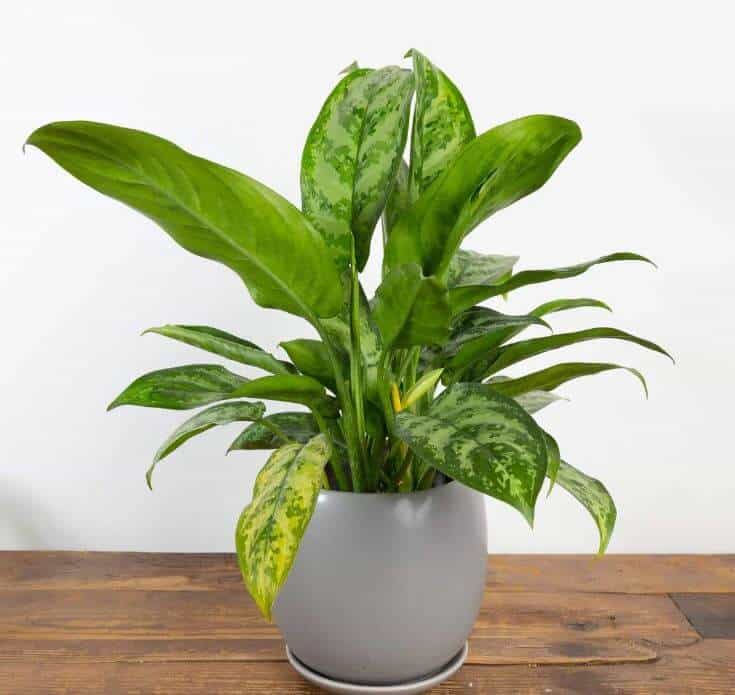
This cultivar should be repotted annually or whenever it doubles in size. Evaluate if your plant needs a larger pot or if it is sufficient to provide a fresh growing medium.
Aglaonema Indo Princess Propagation
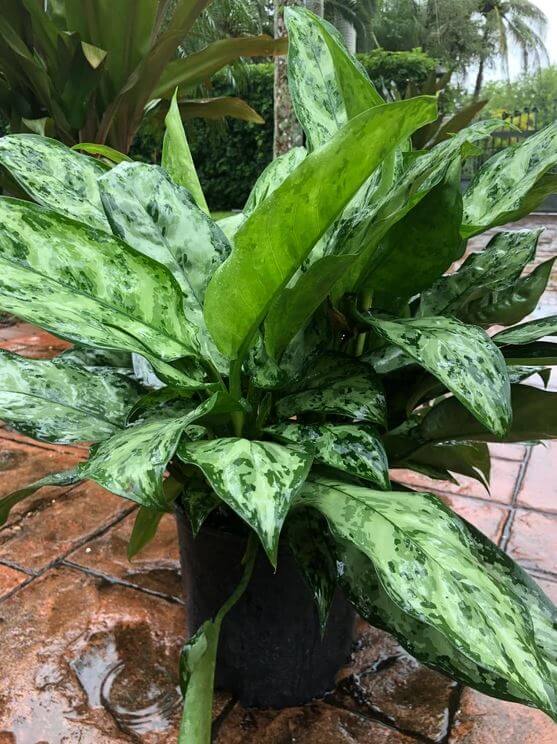
It’s best to propagate the Indo Princess Aglaonema in the spring or summer. It can be propagated using division during repotting or transplanting, or by developing aerial layouts. A branch should be cut in sections that are three to four inches with leaves remaining on the sections. Cover the sliced ends in powdered charcoal and set them aside for 24 hours to dry. Then insert the ends into peat moss and wet sand and place them in a warm location. Roots should form within a month’s time.
Aglaonema Indo Princess Plant Problems
Flowering can be a problem. They are of no benefit to the plant and basically sap energy. They also are not significant to look at. With heavy blooming, new foliage will be smaller and may even have a distorted form. Remove flowers as they appear. Do not remove leaves.
The most worrisome pest for these plants is the mealybug. White and cottony in appearance they generally take hold where the stem and leaves join or on the underside of foliage and on roots. Plants that suffer infestations will become stunted and eventually die. Other pests to watch for include spider mites, aphids, and scales. All can be treated with insecticidal soap or with organic Neem oil.
This aglaonema is at risk for disease primarily during propagation. Erwinia bacteria is a major threat causing leaves and stems to rot and turn slimy. Fusarium rot also can be a problem causing mushy rot at the plant’s base. Infected plants should be removed and destroyed.
Leaves can also start curling and you will have to figure out what’s causing this problem in order to solve it.
Aglaonema Indo Princess Plant Toxicity

Aglaonemas are considered toxic to both cats and dogs reports the American Society for the Prevention of Cruelty to Animals-ASPCA. All plant parts have calcium oxalate crystals. These crystals are released when a leaf or stem is broken. They irritate the skin or the mouth and can cause swelling. Equally problematic is the ingestion of plant bits by pets with the throat and gastrointestinal tract at risk for a reaction.
On occasion, swelling can cause of the upper airway to close partially, placing breathing at risk. Contact a veterinarian immediately or your local poison prevention center.
Oxalate Crystal poisoning symptoms might include:
- Swelling
- Diarrhea
- Vomiting
- Heavy or excessive drooling
- Mouth or throat pain
- Blistering in the mouth and throat
- Nausea
- Lack of appetite
The taste of the plant is described as bitter, so pets will generally avoid chewing limiting undesirable reactions.

